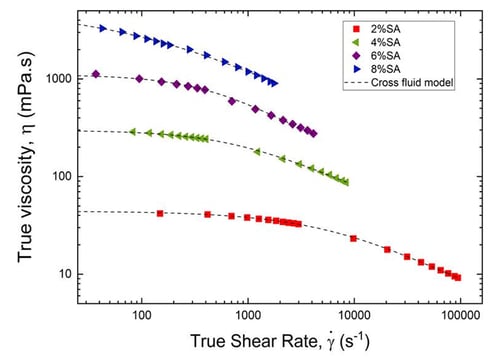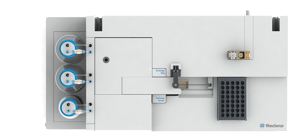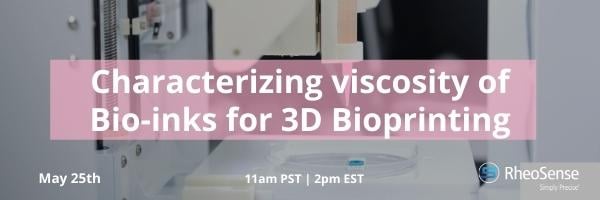Moderate to high viscosity samples are commonplace in many industries such as pharmaceuticals, food products, and bio-ink printing. Protein therapeutics are often formulated at high concentrations to achieve the required clinical dose in a small volume. Since proteins are inherently attractive, the viscosity of the solution can increase exponentially with concentration. Other applications require a particular viscosity versus shear rate profile, which is achieved by introducing polymeric rheology modifiers or thickeners. For example, certain printing techniques for bio-inks work best with highly shear thinning materials which have higher viscosities at low shear rates. Since the temperature can be intentionally varied over the course of the printing process, the bio-ink viscosity versus temperature profile is also highly relevant when predicting performance. The typical increase in viscosity with decreasing temperature can be exacerbated when the material also undergoes a structural transition with temperature (e.g. sol-gel).
Although the fully automated VROC® initium one plus was initially optimized to measure lower viscosity fluids, it has become clear that a broader application range would be beneficial to many industries. The flexible measurement platform has multiple chip or flow channel options and advanced software with customizable protocols that make this possible. Loading, measurement, and cleaning protocols have all been developed to accommodate higher viscosity samples. Quality data can be obtained by simply choosing the appropriate flow channel depth, pressure sensitivity, and corresponding protocols.
Samples with viscosities up to 10,000 cP have been tested on the VROC initium one plus. The high viscosity fluids can either be manually injected into the test syringe, or in some cases, introduced with the auto-sampler using a modified loading protocol. Auto-loading parameters such as aspiration and injection rate can be adjusted for efficient loading. The viscous lag time, which is particularly relevant for viscoelastic fluids, can also be increased when necessary. Other tips for measuring high viscosity fluids include forward flow only without retrieval and customized cleaning protocols. Cleaning can be performed at elevated temperatures or with solvents that degrade the sample to reduce the viscosity and prevent clogging.

Download our application note
"Characterizing the Viscosity of Sodium Alginate for Bio-ink Applications" to see the full data analysis of high viscosity samples measured on the VROC initium one plus.
If you thought that your high viscosity samples were not compatible with a high throughput automated viscometer, please contact the RheoSense team to see if we can create a series of custom protocols just for you!
Written by: Stacey Elliott, PhD, RheoSense Principal Scientist



